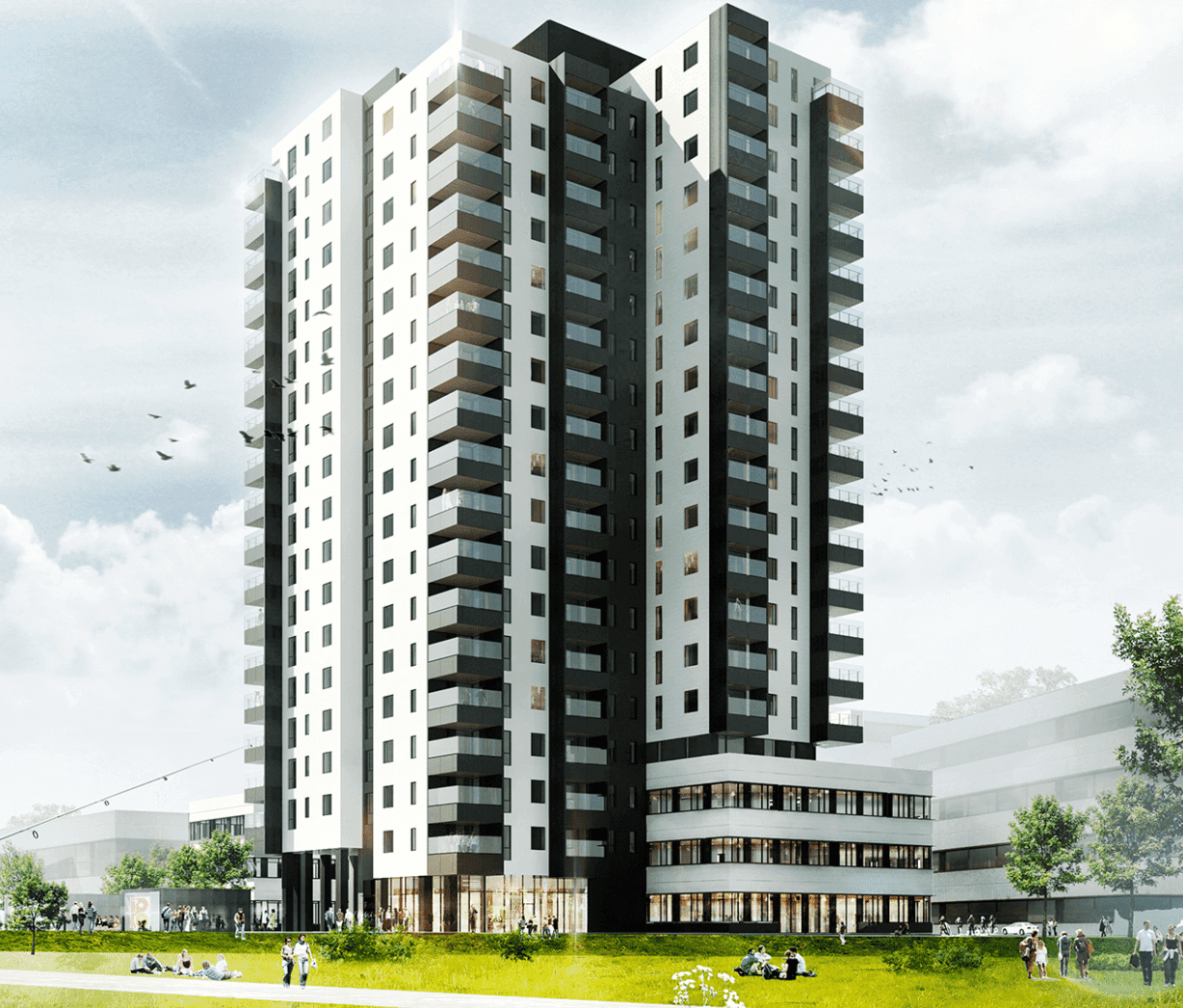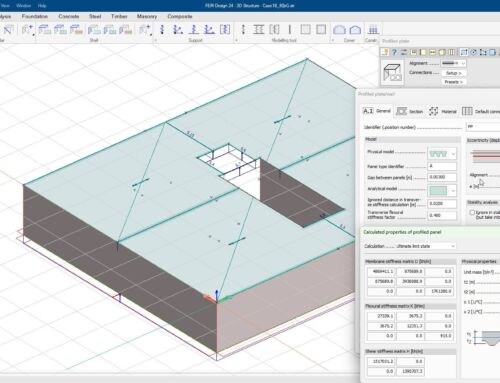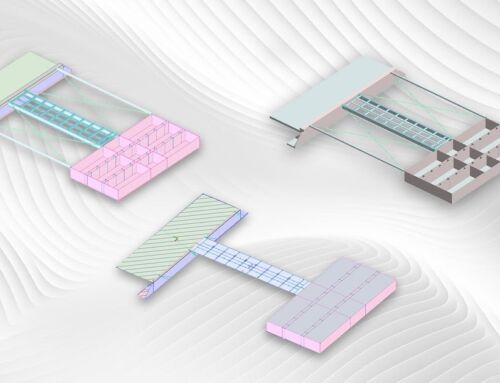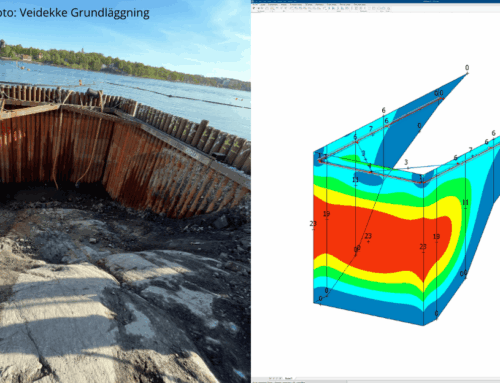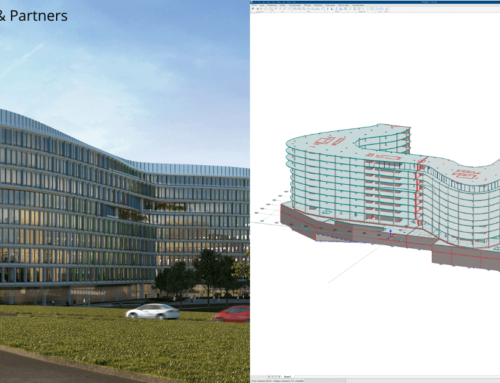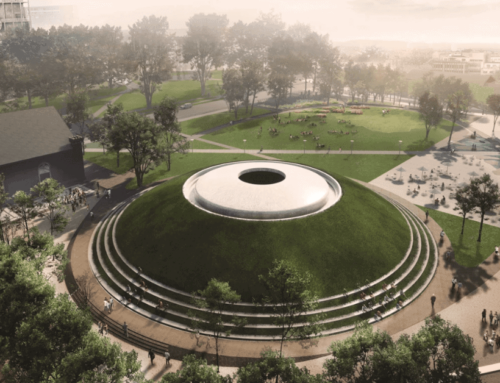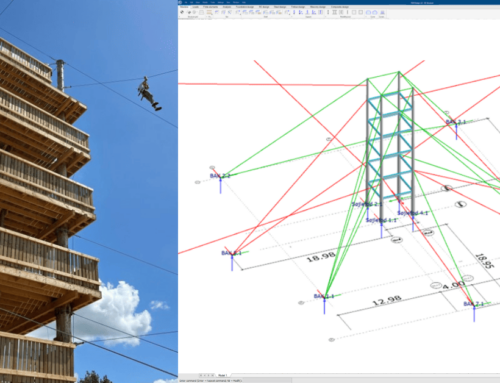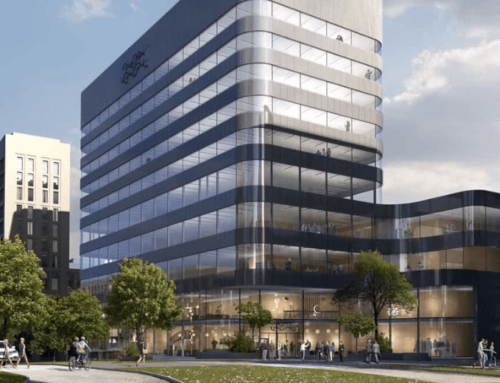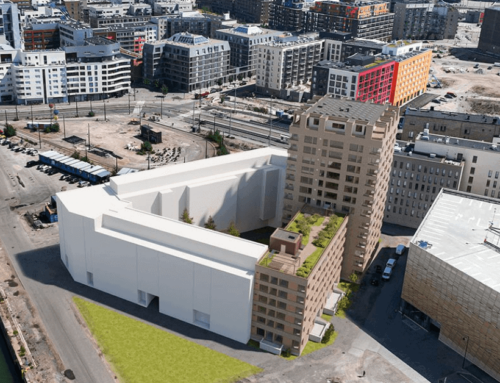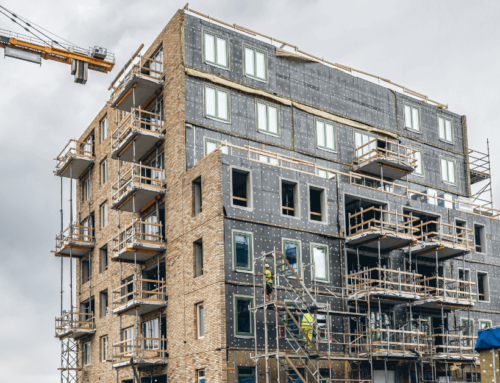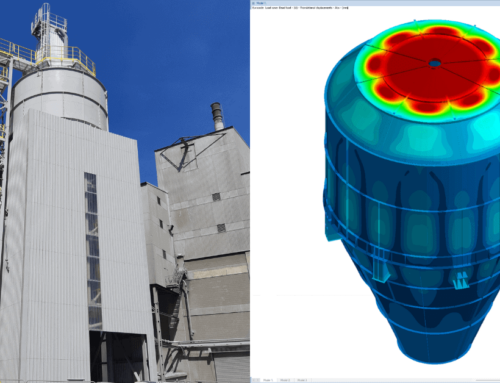An impressive high-rise apartment building project Ceres Panorama rises 68 meters above the ground in the city of Aarhus. The experiences from this project have significantly improved the BIM structural analysis skills in NIRAS and lifted them to another level.
Dennis Kristensen, CEO of StruSoft, met with Jacob Andersen, Civil Engineer at NIRAS DK, to talk about computational tools and the implementation status of structural BIM workflows at NIRAS Aarhus.
In 2012 NIRAS decided to invest in StruSoft’s FEM-Design software and it was the direct connection with Revit 3D modelling program that was decisive.
At NIRAS, Autodesk Revit is used as the primary drawing tool. AutoCAD is used only if there is a specific requirement of each project. The reason for this is simple: NIRAS wants BIM.
Why did you choose StruSoft’s FEM-Design?
“We also have other FEM programs, but I see StruSoft’s FEM-Design as an essential part of our future software package. It has unique functions that you will not find elsewhere. We often work with shell structures, and this is the strong point of FEM-Design. The goal is to automate the design process in one place.
At the Ceres Panorama project, we used FEM-Design for the concrete cores and all of our documentation comes from FEM-Design. One of the major benefits of using FEM-Design for the Ceres Panorama projects was that we avoided the tension anchors, because we simply could prove that we had compression on the bottom edge of each wall.
The biggest advantage of FEM-Design is for us the design of concrete plates and shells. It is simple to control the edge connections’ properties and that is crucial in the design of precast concrete structures.”
What BIM structural analysis workflow do you prefer for larger projects?
“Personally, I always aim to export the 3D model to FEM-Design from Revit. We do this primarily because we want to make a complete structural calculation of the building. It is a huge advantage that we can transfer everything! Including all door and window openings. We want to activate as many structural walls as possible, not only 5-6 anchored walls. It is a huge advantage to import the model from Revit”.
At Ceres Panorama, StruSoft FEM-Design was used to design the building’s concrete cores. Were the results translated directly into practical reinforcement drawings?
“Yes. Reinforcement for vertical forces has never been difficult. Reinforcement for shear walls has been a challenge, but FEM-Design is handling that really well”.
NIRAS have used StruSoft’s StruXML Revit Add-In since 2013 and they have participated in the further development of StruXML. When I ask Jacob if he would like to share a few tips (he smiles):
“You must realise that it will not work right from the first time, and it is in Revit that the battle must be fought. The first thing we did was to take a training course at StruSoft regarding the StruXML Revit-Add-In. With this course we learned all the basic tools we needed. In Revit we use reference planes both vertically and horizontally, so we have the opportunity to put in the analytical model layers for walls, regardless of the modification of wall thicknesses. The easiest way to ensure success is for the Design Engineer to work directly with the analytical model. You must be sure that the geometry fits. It is the alpha and omega.
We make decisions on how we would draw our analytical models. The Revit model also includes plumbing and electric wiring and by exporting only the analytical model, we get all the installation holes into our model, without any extra work.
We try to advance as much as possible with the Revit model before we start the structural calculations. The Revit designers do not need to take into consideration that the model will be used for structural design. The engineers do that. Placement of all analytical lines is decided by us alone.
We find all shear forces in the wall connections directly in FEM-Design, with spring stiffness found on Aarhus University test projects. We use these forces to design our connections.”
Besides the Ceres Panorama project, NIRAS has also used FEM-Design for the “Havnehusene” project and at the school extension in Horsens. These models were also imported directly from Revit with the help of StruXML.
Written by Jacob Andersen, NIRAS and Dennis Kristensen, StruSoft.
